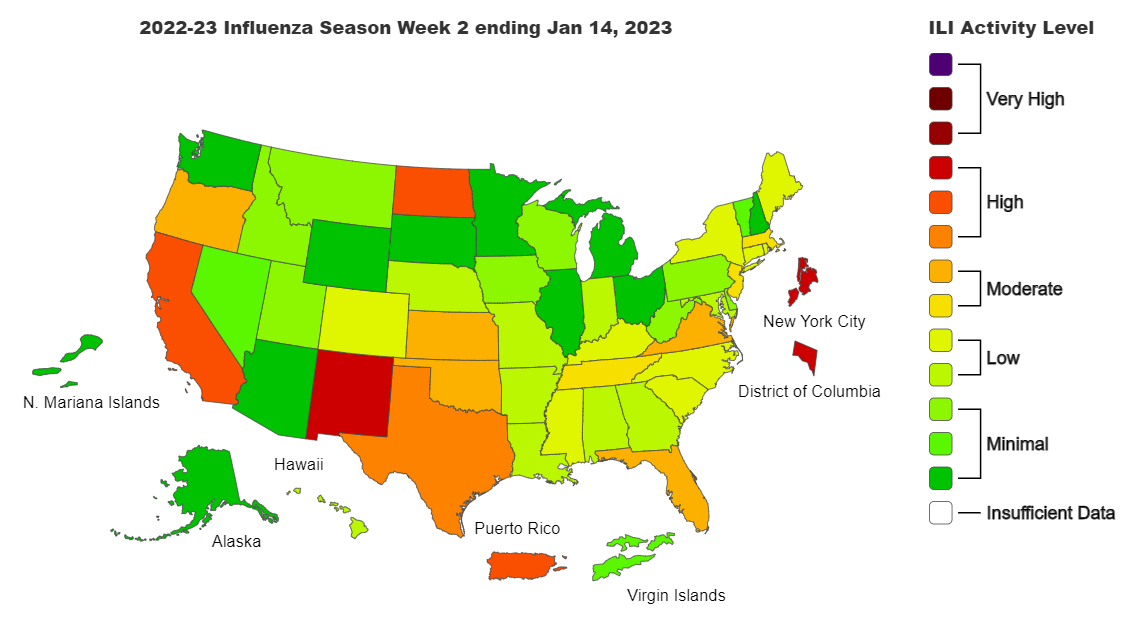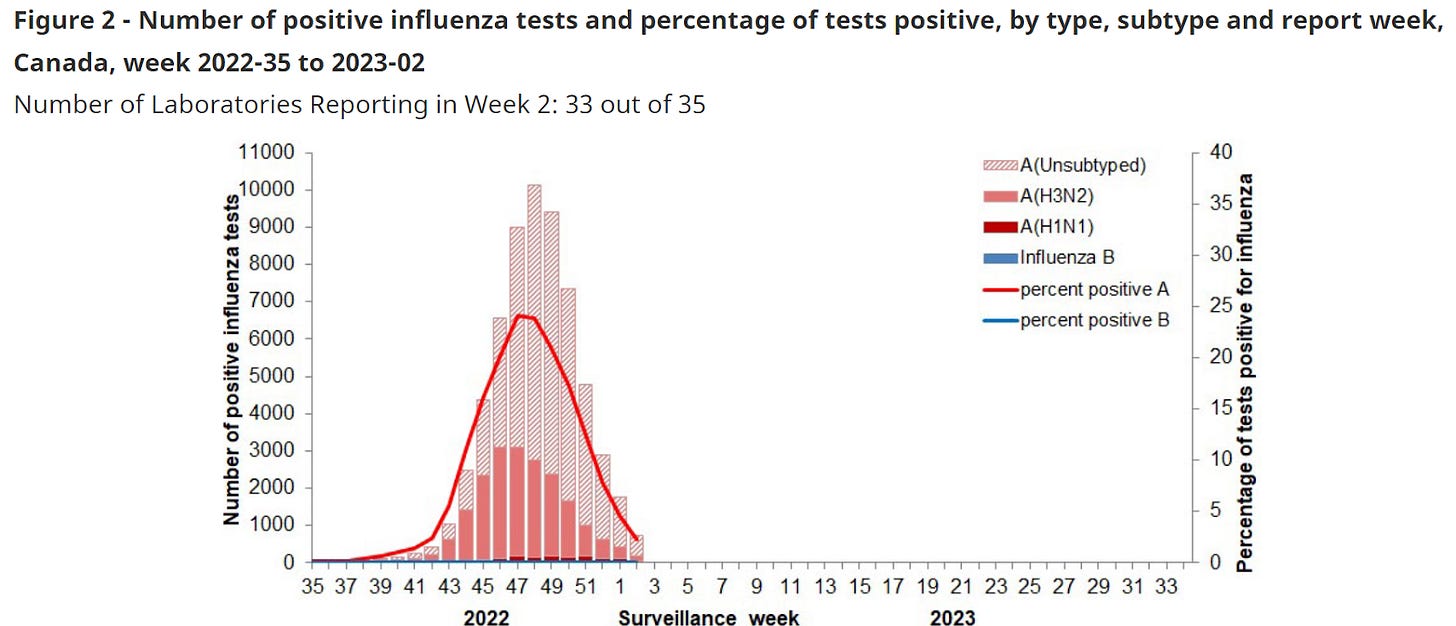Respiratory diseases
I am ready to say goodbye to what was (in my household, at least) a challenging respiratory virus season.
Influenza-like illness (ILI) has dropped precipitously since the peak in late November, and we may soon cross the threshold that marks baseline (the dotted line in the figure below).

Most states are now enjoying a yellow/green status. Just seven jurisdictions remain in the high or very high categories. If you are in one of the red zones (California, New Mexico, New York City, North Dakota, Puerto Rico, Texas, or Washington, D.C.), relief is coming. Influenza-like illness activity is decreasing in all these areas—except North Dakota, which saw a slight uptick in outpatient ILI visits this week.

There’s no rule that says that the flu can’t bounce right back. In fact, influenza B often makes a late appearance, driving a smaller second wave after flu A has peaked. I’ll let you know if that develops. But for now, I’m breathing a sigh of relief.
The Covid-19 wave that has been climbing since October has also begun to recede. Cases, tests, hospitalizations have all improved, especially among people ages 70+.

If you can’t get enough of respiratory disease surveillance, CDC recently released a handy new dashboard that compares hospitalization rates for Covid-19, flu and RSV, plus a combined metric. Note that the data are a little delayed (I’m currently seeing data for the week ending Dec 31, ‘22) and fourteen states are represented. There is also a dashboard with similar data but from emergency department visits, which has data through January 14. As a parent of young children, I’m especially partial to the age breakdown. It confirms that although kids had a tough winter, the epidemiological situation has begun to improve.
The seasonal coronaviruses defied my expectation by continuing to climb this week, at least according to CDC data. Seasonal coronaviruses most often cause cold-like symptoms. Data from Biofire shows the seasonal coronaviruses in a bit of a plateau, but I note an uptick in rhinovirus/enterovirus, another cause of common cold.
And to my Canadian readers, hello! Influenza and influenza-like illness have both dropped to below where they would normally be this time of year. No real sign of influenza B yet, either. Good news.

Food recalls
The following foods are being recalled because they are contaminated with bacteria that causes food poisoning. Please check your cupboards and throw out any of these items:
New this week:
Two recalls of alfalfa sprouts, sold by Fullei Fresh and SunSprou Enterprises. The sprouts were sold to retailers and distributors in Florida, Nebraska, Kansas and Iowa. (more info, more info)
Reported in the last month:
A recall of Enoki mushrooms sold by Utopia Foods Inc has been expanded to include packages with best by dates of 03/02/2023 and 03.09.23. The mushrooms were sold to wholesale companies in NY, NJ and CT. (more info)
Frozen manicotti by Caesar’s Pasta, sold to restaurant distributors in Pennsylvania, New York and Puerto Rico (more info)
Nestle edible Chocolate Chip Cookie Dough tubs with best-by dates of January 28-30, 2023 (more info)
There is also a multi-state outbreak of Listeria linked to deli meats and cheeses, but the specific source has not been identified. If you are pregnant, over the age of 65, or have a condition that weakens your immune system, consider avoiding meat or cheese from deli counters. (more info)
If you have food allergies, you may wish to review these FDA safety alerts for foods with undeclared allergens.
I’m also watching…
In October, there was an outbreak of highly pathogenic avian influenza A (H5N1) in farmed minks in Galicia, Spain, including evidence of forward transmission among the mink (that is, it appears that the infected mink were spreading it to each other). All minks at the infected premises were culled, with no evidence of spillover to humans. However, the apparent mammal to mammal transmission raises concerns that mink could serve as a “mixing vessel” for influenza, since they have been shown to be susceptible to both human and avian influenza A viruses. This raises the risk that H5N1 could, in theory, begin to transmit efficiently between humans.
In the UK, both scarlet fever and invasive group A strep infections remain at higher than normal levels, but the number of new cases has begun to decline in recent weeks. However, new invasive group A strep infections among older adults, particularly those over 65, have not decreased as quickly.




